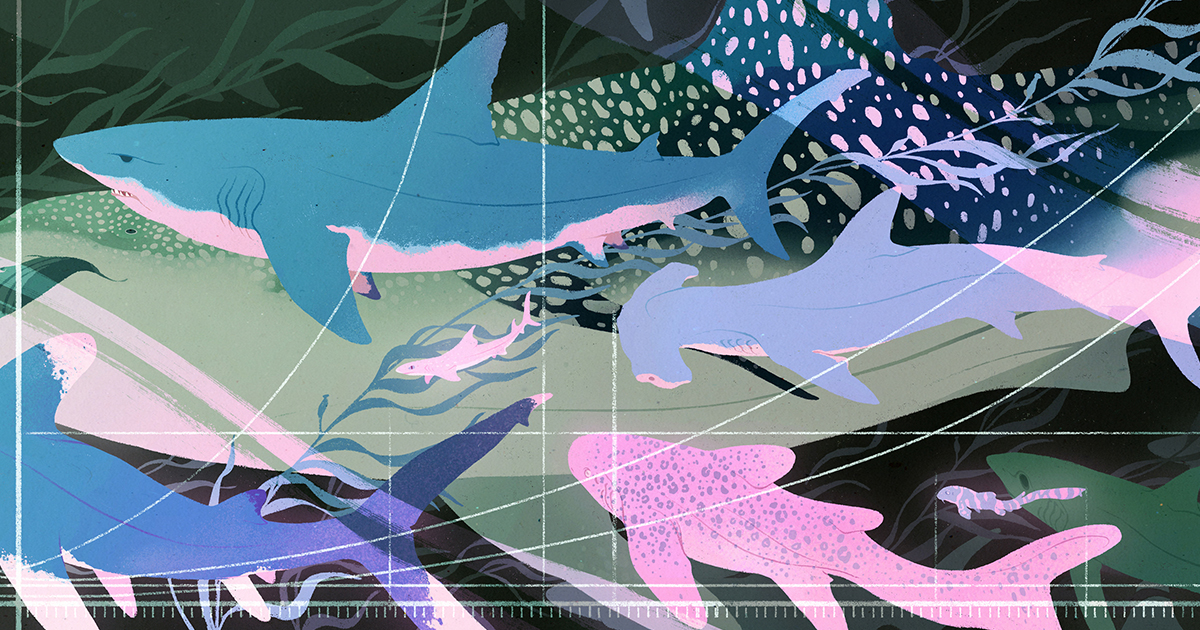It’s a universal fact that as any 3D object, from a Platonic sphere to a cell to an elephant, grows outward in all directions, its total surface area will increase more slowly than the space it occupies (its volume). If the object’s geometry and shape remain the same as it gets bigger, then its surface area will increase roughly as fast as its volume to the two-thirds power. For centuries, biologists have wondered if life forms, too, follow this two-thirds scaling law, even though they come in a stunning variety of shapes and sizes. If so, it would suggest that there are underlying constraints fundamental to evolution that might influence how life interacts with the world around it.
Recently, researchers used CT scans and digital tools to calculate the surface areas and volumes of an ancient and diverse animal lineage: sharks. The team’s analysis, published in Royal Society Open Science, included more than 50 shark species and provides some of the best empirical evidence to date for some kind of firm scaling rule in zoology. As with a sphere, the surface area and body mass of sharks do indeed follow a two-thirds scaling law, the team found. If this holds true in other animal groups, it probably reflects underlying rules of heat exchange, metabolism or development that constrain evolution.
If you’re looking for an animal group in which to study biological scaling, it’s hard to do better than sharks, according to Joel Gayford, a shark biologist at James Cook University in Australia who led the new study. They share an overall form, but come in many sizes, occupy a plethora of niches, and have huge variations in body shape. In his research into sharks’ morphological evolution, Gayford noticed what appeared to be scaling relationships between their body parts, such as the sizes of their fins. It made him wonder whether there might be more fundamental rules constraining the forms that sharks can take.
However, he could find little high-quality research into scaling in large animals. Research in single cells has uncovered many deviations from expected rules; rare studies in smaller animals such as insects and snakes have found some evidence for two-thirds scaling. But few studies included larger animals, and most of those were conducted decades ago. Plus, Gayford found that existing animal scaling data was somewhat messy. Due to technological limitations in the 19th and 20th centuries, attempts to accurately measure animals’ surface area and volume were “error-prone and also kind of ethically questionable,” he said.
First Appeared on
Source link













